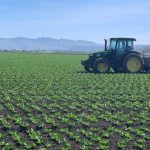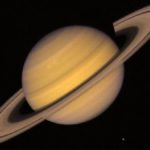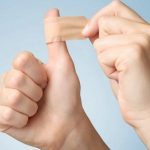 Mysteries
Mysteries  Mysteries
Mysteries  History
History 10 Surprising Stories About the Texas Rangers
 Humans
Humans 10 Philosophers Who Were Driven Mad by Their Own Theories
 Miscellaneous
Miscellaneous 10 Video-Game-Worthy Weapons and Armors from History
 Weird Stuff
Weird Stuff 10 Psychics Who Accurately Predicted Wartime Events
 The Arts
The Arts 10 Pieces of Art Inspired by a Broken Heart
 Health
Health 10 Science Fiction-Sounding New Medical Treatments
 History
History 10 Surprising Facts About the Father of Submarine Warfare
 Space
Space Ten Astonishing New Insights into Alien Worlds
 Weird Stuff
Weird Stuff 10 Bizarre Summer Solstice Rituals Still Practiced Today
 Mysteries
Mysteries Top 10 Haunting Facts About the Ghost Ship MV Alta
 History
History 10 Surprising Stories About the Texas Rangers
 Humans
Humans 10 Philosophers Who Were Driven Mad by Their Own Theories
Who's Behind Listverse?

Jamie Frater
Head Editor
Jamie founded Listverse due to an insatiable desire to share fascinating, obscure, and bizarre facts. He has been a guest speaker on numerous national radio and television stations and is a five time published author.
More About Us Miscellaneous
Miscellaneous 10 Video-Game-Worthy Weapons and Armors from History
 Weird Stuff
Weird Stuff 10 Psychics Who Accurately Predicted Wartime Events
 The Arts
The Arts 10 Pieces of Art Inspired by a Broken Heart
 Health
Health 10 Science Fiction-Sounding New Medical Treatments
 History
History 10 Surprising Facts About the Father of Submarine Warfare
 Space
Space Ten Astonishing New Insights into Alien Worlds
 Weird Stuff
Weird Stuff 10 Bizarre Summer Solstice Rituals Still Practiced Today
10 Innovative Spinoffs Developed by NASA That Changed Our Lives
We expect a leading organization in the international space race to develop insane tech, spearhead invaluable innovation, and come up with solutions to problems so far above the mental capacity of us mere mortals we might fail to comprehend. However, sharing technology is not everyone’s business. Naturally, NASA also has to solve everyday problems that we take for granted here on Earth, made more complicated by the absence of oxygen and gravity or the dangers of temperatures far below freezing.
Luckily for us, NASA is quite generous in how they share their inventions, which makes it possible for us to use them to better our own lives in the process. Here are ten innovation spinoffs developed by NASA that changed many lives here on Earth
Related: Ten Most Expensive NASA Programs
10 Breast Cancer Detection
Working in space has many downsides. One of which is exposure to radiation. It was found that astronauts working on the International Space Station (ISS) were exposed to radiation equal to as many as 1,000 chest X-rays.
Although we are constantly exposed to various levels of radiation here on Earth, radiation in large quantities can be quite cancerous. Intensive preventative care and detection technology were therefore required to prevent their colleagues from developing terrible life-threatening cancers. NASA invested in research to study how sections of DNA can measure a person’s radiation exposure and assess the damage.
The BioScan System has been proven to be able to scan, find, and confirm the presence of cancer in the breasts by detecting the cancerous cells’ ability to recruit an alternative blood supply—a clear red flag of malignant lesions.[1]
9 Safety Grooving Highways
Hydroplaning during rainstorms is a condition that causes the tires of a car rolling or sliding along the slippery road to be lifted away from the surface due to water pressure. This leads to a loss of control of the vehicle and is considered the main reason uncontrolled skidding happens during inclement weather.
As you can imagine, hydroplaning is a terrible thing to happen to a spacecraft returning to Earth at insane speeds, so NASA jumped to task. In the early ’60s, safety grooves in the runway were proposed, which would channel the water off the surface, providing better traction.
It wasn’t long before the innovation was used to improve the roads Americans travel on every day, leading to a reduction in almost 85% of wet-weather accidents since the implementation of the grooves.[2]
8 Apollo-Era Life Rafts
Space travel has become more sophisticated over recent years, with shuttles landing on Earth in one piece, with designated runways. But there was a time when it wasn’t as easy, and pods would find themselves deep in the ocean in a maneuver called a splashdown.
NASA teamed up with a man named Jim Givens, who was working on a similar invention, something that would keep the astronauts afloat while the search for them in the vast ocean continued. The collaboration developed an inflatable raft system that could be deployed once they hit the water.
The Givens Raft has been adapted for commercial use and, after many years of use and adaptations, has saved upward of 450 lives that would have been claimed by the sea.[3]
7 Airplane Winglets
When a fuel crisis in the 1970s threatened global air travel, the entire industry almost collapsed. Adversity breeds opportunity, so a band of NASA engineers and scientists came together to explore new fuel-saving technologies.
The Aircraft Efficiency Program was a 10-year program to develop various aeronautical technologies in the hopes of making future craft up to 50% more fuel efficient. It was to be completed by 1985 but was extended.
In partnership with Boeing, they initiated a winglet flight test based on the findings of Richard Whitcomb and proved a 7% increase in lift-drag ratio with a 20% decrease in induced drag. This finding led to an overall reduction in fuel consumption and millions in fuel savings since the winglets were introduced.[4]
6 Implantable Cardiac Defibrillator
The first Implantable Cardiac Defibrillator was developed by Dr. Michel Mirowski, a cardiologist at the Johns Hopkins School for Medicine. It was implanted by Dr. Levi Watkings of the same institute.
But the life-saving technology we know today is derived from NASA’s space circuitry technology and can prevent erratic heart action known as arrhythmias. The implanted unit consists of a microcomputer power source and two heart sensors that can deliver corrective electrical shocks in the event of an irregular heartbeat.
The discovery of polymers also made it possible to implant pacemakers in complicated cases of congestive heart failure, and it all started with an attempt to build a passenger jet that could break the sound barrier.[5]
5 Invisible Braces
Some of us are lucky enough to have avoided those uncomfortable wire tracks that slowly pull our teeth together like some contraption from the Stone Age. Still, many people around the world will have to adorn braces at some stage in their lives.
Up until the late ’80s, braces were made from a very noticeable metal that held your teeth together. Sometimes, they added colorful rubber bands for some flash. NASA, in conjunction with others, invented translucent ceramics that became a popular component in “invisible braces,” which went on to be a bestseller in the world of orthodontics.
It’s not the only way NASA has influenced the world of orthodontics, with the use of alloy, ultrasound, and X-rays to detect and improve overall dental health.[6]
4 Smoke Detectors
Although smoke detectors have been around for a while, it wasn’t until the 1960s that they were adjusted and made available for home use. The device was cheap, easy to install, widely used, and frustrating as heck. Legislation made it compulsory, but the frustrating part was that false alarms became a common thing.
Around the time smoke detectors became a household item, NASA was busy finding ways to prevent false alarms in Skylab and other space labs. So they, working with Honeywell Corporation, set out to invent a new technology that was sensitive to differences in smoke and other fumes. They also fashioned the detector into a handy plastic unit that could be adjusted according to needs.
The smoke detector has saved thousands of lives since its invention (not to mention reducing the cost of false alarm callouts), with the adjustable smoke detector likely preventing many people from going insane.[7]
3 Cell Phone Camera
When you dip your chin, tilt your shoulder, and bend one of your legs ninety degrees for your next selfie, hold out a thought for NASA as they contributed to the development of the cell phone camera.
NASA did not develop the cell phone camera, but what they contributed was key technology that helped with its creation. Active pixel sensors are a key element in digital imagery, which NASA developed for space travel. This tech, in turn, gave rise to what’s known as complementary metal oxide semiconductor image sensors (CMOS).
CMOS image sensors originated from NASA’s desire to create fast, cheap spacecraft but also led to the development of charge-coupled devices, which allowed for high-quality digital photos by the late 1980s. Eric Fossum further pushed for even smaller and lighter machinery using the CMOS tech to create active pixel sensors. Say cheese![8]
2 Tracking Systems
Initially used on low-orbiting satellites and distant geostationary satellites, the cross-use of tracking technology has come a long way.
Since the 1970s, NASA has provided aid and expertise to the Cospas-Sarsat program, which is an international satellite-aided search and rescue effort. By utilizing the Search and Rescue System Satellite Aided Tracking System (SARSAT), multiple search and rescue type beacons have been developed (for example, the current 406 Beacon), enabling explorers to venture on land, air, and sea with a sense of security not previously known.
It is estimated that over 50,000 people worldwide in life-threatening situations, have been rescued by the inventions of the SARSAT beacons.[9]
1 Plant Texting
If you do not already have enough notifications on your phone, it might soon be possible to receive texts from your thirsty plants demanding water.
BioServe Space Technologies, a company sponsored by NASA, has developed a leaf sensor of sorts that can detect whether your plants require water using electrical pulses. The world was quick to realize its agricultural benefits, and massive funding has subsequently led to amazing advancements in the field.
For those who do not have the greenest of fingers, it is quite possible that in the near future, your plant can be fitted with a custom device to alert you to low water levels. We will leave it to you to decide whether you want the thought of your plant dying of thirst while you are away hanging over your head.[10]








